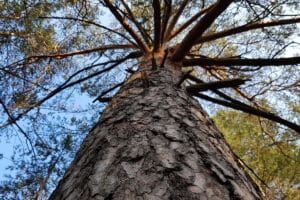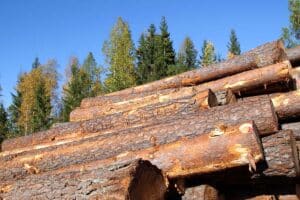Each quarter, when publishing the Forisk Research Quarterly, our team reviews the performance of prior projections to learn and adjust models, or to identify new issues relevant to timberland investors and owners. Then, on an annual basis, we back-test these models to rebuild and improve them. While helpful and educational, the exercise of back-testing and refining models raises a question: are we forecasting the future to make decisions or are we explaining the past to learn (and make ourselves feel better)?
Analyzing Timber Markets
Forecasting serves many roles. In the Timber Market Analysis short course that we teach each year, we review how, in addition to helping set budgets and estimate values, the process of forecasting can support efforts to eliminate options, allocate resources, and identify key drivers. In this way, the use of forecasts supports decision-making.
If forecasting was simply the projection of prices, we could simply draw a trend line and move on. It would be easier and some feel that should be sufficient. However, in our respective forestry fields, whether as analysts or investors or brokers or managers, we have at our disposal hard facts and accumulated experience. The process of developing forecasts and relevant scenarios levers these to increase our understanding and make decisions.
Building and Applying Forecasts
In this way, building a model to forecast (timber) prices includes identifying and understanding relationships in historical data to infer future conditions for local and regional timber markets. That means, on our team, we first use back-testing to help explain what happened in the past. Our understanding of how, for example, natural disasters like hurricanes affect local timber markets and production is largely a retrospective one. We use what we’ve learned across markets over time to better explain the effects of unique events. Secondly, we then take our new learnings and apply them to scenarios and other events in the future.
In short, the act of developing forecasts is both explanatory and prospective. For evaluating markets for timber and forest products, our process is explicitly applied. We take the variables we understand, such as wood-using mills and forest supplies, and evaluate a range of scenarios to provide a set of plausible future outcomes.
To increase the relevance and usefulness of this work, we want to structure the forecasting process around scenarios designed to help make decisions. Developing scenarios that answer client questions and support decision-making is a current focus and priority. If the goal of a timber forecast is to plug a hole or check a box, then we could use the current price or a trend line. But if the goal is to develop a nuanced view of the future that supports investment decisions, then we want to confirm the forecast process helps us do this.
Forecasts serve a role. They help compare timberland or mill projects against a common set of assumptions. The question with the forecasting exercise is, “Do we know more about wood baskets or timber markets when finished than when we started?” If so, we improve the quality of our investment decisions.
This content may not be used or reproduced in any manner whatsoever, in part or in whole, without written permission of LANDTHINK. Use of this content without permission is a violation of federal copyright law. The articles, posts, comments, opinions and information provided by LANDTHINK are for informational and research purposes only and DOES NOT substitute or coincide with the advice of an attorney, accountant, real estate broker or any other licensed real estate professional. LANDTHINK strongly advises visitors and readers to seek their own professional guidance and advice related to buying, investing in or selling real estate.










Add Comment